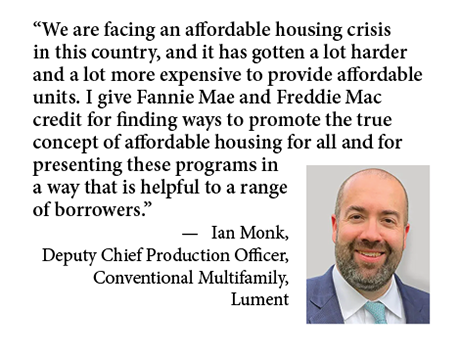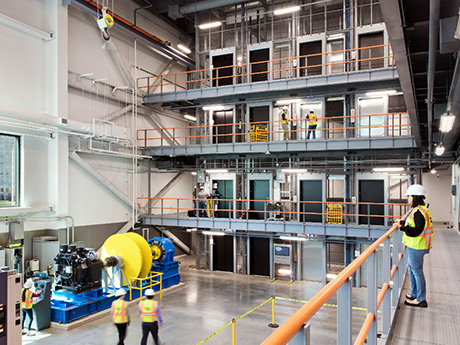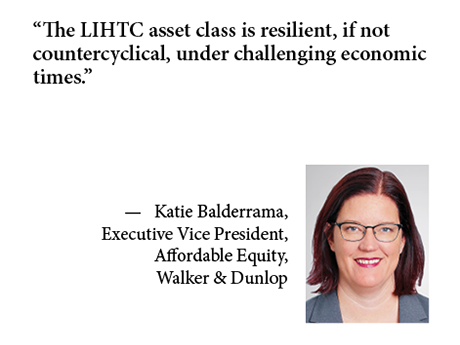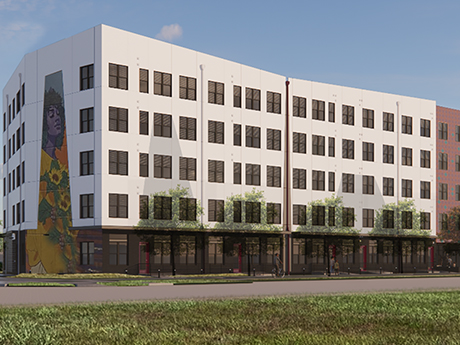By Matt Valley DALLAS — The success or failure of an active adult community hinges on whether the operator can deliver on its valuation proposition, and tenants are willing to pay a premium if their lifestyle expectations are met. That’s one of the key takeaways from an active adult panel discussion that took place March 6 during the 2024 NIC Spring Conference at the Omni Dallas Hotel. Prospective tenants in this real estate niche are experienced, sophisticated consumers who know when they are being sold a bill of goods. They know if leasing people aren’t being sincere, said Robert May, managing director of Avenida Partners, a national real estate development firm with offices in Newport Beach, California, and Nashville, Tennessee. “They come to our communities for the first time knowing a whole lot more about us than we do about them because of the internet, because of social media, because of that senior network that’s out there,” explained May. “The brand is everything. It’s what they see, it’s what they hear, and they’ve got to feel it. They’ve got to feel that you’re really there to deliver that value proposition, that lifestyle that they are looking for.” For traditional multifamily …
Features
Affordable HousingContent PartnerFeaturesLoansLumentMidwestMultifamilyNortheastSoutheastTexasWestern
Agency Initiatives Entice Traditional Multifamily Owners, Investors to Workforce Housing
A trio of social-impact lending programs is enticing enough to convince market-rate multifamily owners and investors to dip their toes into the affordable housing sector. These recently launched initiatives all promote the creation and preservation of workforce housing. Unlike low-income housing tax credits, Section 8 rent vouchers and other longstanding programs centered on helping families with low and very-low incomes to afford housing, the newest offerings primarily aim to assist missing middle renters — or those with modest-to-low incomes. That’s according to Ian Monk, deputy chief production officer for conventional multifamily at Lument — which is educating its borrowers about the competitive pricing, generous proceeds and potential for lengthy amortization periods available from Fannie Mae and Freddie Mac. “By charter, the government-sponsored enterprises (GSEs) have a duty to help provide housing that is affordable to all people, including families with only moderately low incomes,” Monk says. “In the multifamily arena, they may serve those families in fully dedicated affordable communities, but they can also serve them in conventional, market-rate properties that adopt some affordability initiatives using one of these social-impact loan structures.” The GSEs are making a strong push in 2024 to expand participation in the three social-impact loan products, …
The data center market remains a powerhouse of growth and demand in the commercial real estate world. REBusinessOnline sat down with Ryan Goeller, a principal at NAI KLNB commercial real estate services in Virginia, to discuss the various factors impacting this dynamic asset class. REBusinessOnline: Briefly, a data center is a dedicated building housing computer servers and storage systems, constantly processing and managing data for various applications. What is the current state of the data center market? Goeller: Extremely active, with very high demand. Development pipelines are at full power and are strained in certain markets. Leasing demand is through the roof. REBusinessOnline: What types of tenants use these data centers, and what are their space needs? Goeller: The majority of the time, the need for space is so insatiable that entire buildings are leased to single users, especially when it comes to large hyperscale computing projects. However, there are still colocation providers housing smaller tenants in certain buildings. A lot of the activity happening in Northern Virginia is hyperscale activity. These are large tech companies coming in and building 2-million-square-foot campuses that they’re fully occupying themselves. In these instances, the tenants aren’t likely to move once they occupy a space; …
By John Haba, principal, Gensler Houston The demands of global economics and trade continue to evolve in the wake of rapid digital transformation. There is an urgent need to build more resilient supply chains and infrastructure as international disruptions impact local economies. With this shift comes a great opportunity for industrial and logistics facilities to become more efficient, responsive and resilient. A key consideration in the evolution of the industrial sector is how a company embraces safety culture. Safety culture focuses on preplanning the processes needed to achieve an end goal while also continuously and purposefully reviewing and optimizing that goal as it relates to safety, quality, cost and constructability. There is demonstrated value in having architecture, engineering and construction consultants understand the significance of safety culture because it allows for “outside the box” thinking to bring value to a solution. This leads to efficiencies in construction and operations, an increased quality of work and a better value proposition. Efficiencies in Construction, Operations Today, site selection is more challenging than ever before, primarily due to the connectivity of infrastructure and systems, including water, electrical, gas, sewage and more recently, data. This is also compounded by the historical issue of community …
By Heather Drennan, senior director of talent development, and Kory Nelson, marketing director, of Birge & Held The use of proptech is a factor that is sure to come up regularly in conversations among executive teams, regional vice presidents and local property teams, simply because the capabilities of modern technology and innovations are endless. For example, consider this article by Fast Company, a publication at the forefront of technology, innovation and leadership. The article cites how the implementation of proptech can have an all-encompassing, positive effect at the resident, community, societal and even environmental level. From innovations that reimagine the way residents tour an apartment complex and gain access to their units to those that redefine how property management and maintenance teams complete trainings and respond to residents’ requests, it’s clear that technologies bolstering automation and artificial intelligence (AI) are here to stay. But that’s not to say there isn’t any pushback. The multifamily space is rooted in relationships that are essential to building and maintaining community, and for many renters, the presence of a human connection remains key. This poses a clear dilemma — how should multifamily owners and operators strike a balance between reaping the benefits of proptech …
Affordable HousingContent PartnerDevelopmentFeaturesLoansMidwestMultifamilyNortheastSoutheastTexasWalker & DunlopWestern
LIHTC Program Offers Lifeline to Struggling Multifamily Developers
It’s a tough time for much of multifamily development, but the Low-Income Housing Tax Credit (LIHTC) program offers incentives that make much-needed affordable housing comparatively easier to achieve under the current economic conditions. Building is expensive and financing is tight in the current multifamily market. However, as it has for the last 30 years, the LIHTC program provides solutions that increase the ease of creating and sustaining affordable housing, even when the overall multifamily market faces challenges. The program not only promotes the construction and acquisition of housing but also enforces conditions that help maintain the stability and preservation of affordable properties. The program is also needed to address the demand for affordable housing. The National Low Income Housing Coalition estimates that extremely low-income households represent 25 percent of the nation’s 44.1 million renters and reports a shortage of 7.3 million affordable and available rental homes. Historical Financial Resilience “The LIHTC asset class is resilient, if not countercyclical, under challenging economic times,” says Katie Balderrama, executive vice president of affordable equity at Walker & Dunlop. The firm typically sees a foreclosure rate of under 1 percent on properties supported by LIHTC. “Overall, our affordable housing assets tend to perform fairly …
By Taylor Williams At its mid-December 2023 meeting, the Federal Reserve delivered the news that investors of all types were waiting for: the cycle of interest rate hikes had concluded and that as many as three rate cuts could be forthcoming in 2024. But the first rate cut by the Fed won’t occur until at least March. That’s when the Federal Open Market Committee (FOMC) is scheduled to meet again. In January, the FOMC opted to hold interest rates steady, keeping the target range for the federal funds rate at 5.25 to 5.5 percent. The January jobs report, which showed total nonfarm payroll employment rose by 353,000 — nearly double many economists’ forecasts — has clouded the issue of when rate cuts may be forthcoming. A robust job market argues against the need for immediate rate cuts. The Fed’s every move is tracked closely by the stock market, which responded with a furious rally in December 2023 on expectations for rate cuts in 2024. The Dow Jones Industrial Average closed above 37,000 on Dec. 13, a record high at the time, within hours of the Fed indicating the possibility of three rate cuts of a quarter percentage point each in …
Seniors Housing Investors Are Ready to Switch to Acquisitions Mode, Say InterFace Panelists
by Jeff Shaw
LOS ANGELES — In 2023, particularly in the second half of the year, a combination of forces slowed property sales to a crawl in the seniors housing sector. Amy Sitzman, executive managing director of seniors housing and care at Blueprint Healthcare Real Estate Advisors, laid out the laundry list of challenges. “The bid-ask spread conversation really has everything to do with what’s gone on in the market the past year and a half,” she said. “It has been trying for everybody dealing with interest rate hikes, inflation, operations, staffing challenges, expenses going out of control, the minimal lack of stabilized assets out on the market. We’re just trying to get our head around the value of assets today.” Sitzman made her comments as moderator of a panel titled “Investment Outlook: When Will the Bid-Ask Gap Narrow and Transactions Resume in Earnest?” at France Media’s InterFace Seniors Housing West conference, held Feb. 1 at the Omni Los Angeles. Speakers at the session included Michelle Kelly, senior vice president of investments, NHI; Darrin Smith, executive vice president of Investments, Sabra Health Care REIT; Bryan Schachter, chief investment officer, Watermark Retirement Communities; and Clint Malin, co-president and chief investment officer, LTC Properties. While …
— By Elise Kunihiro and Maura Schafer — Historic building adaptive reuse creates a bridge between the past and the future, resulting in places that can become the hearts and souls of their communities. The reuse of these buildings offers community benefits, such as sustainability, new public spaces and character. Reactivate local economies Beyond revitalizing older buildings, adaptive reuse projects can also support small local business owners. A 1922 brick office building in the East Village Arts District of downtown Long Beach, Calif., for example, now hosts Partake Collective. The 25,000-square-foot cloud concept and food hall incubator allows visitors to support local restauranteurs while dining in a communal food hall or sidewalk dining area. Studio One Eleven served as the project’s architect, while RDC did interiors and procurement. The goal of this redevelopment model was to create a benchmark for future development that celebrates food diversity and enhances community building. It doesn’t hurt that Partake Collective remains an active and engaged member of the Long Beach community by working with local educational institutions to support pathways to private enterprise, business ownership and job opportunities for the most underrepresented communities. Partake Collective has already partnered with culinary programs at Browning High …
Economic Environment, High Tenant Demand Spur Increase in Public-Private Student Housing Projects
by Katie Sloan
In a way, the dynamics of public-private partnerships (P3s) are the same as they’ve always been. “The reasons why universities elect to go the P3 route haven’t changed much,” says Michael Baird, managing director of municipal finance for RBC Capital Markets. “For many, the decision is made based on speed to market. This happens when other alternatives can take years — resulting in an opportunity cost of not being able to provide housing to students that need housing now, in addition to increased development expenses as construction costs continue to increase year over year.” These costs — both the ones saved and the ones incurred by the university — have become increasingly important in today’s economic climate. The cost of construction materials has increased by an average of 19 percent since 2020, notes facility and construction insights provider Gordian. Meanwhile, the annual student housing rent at purpose-built communities rose by an average of 8.8 percent between November 2022 and May 2023, according to RealPage. Construction costs make it easy to see why it’s more difficult to get projects to pencil right now…and increasing demand shows why it’s more important than ever to get them off the ground. Jay Pearlman, senior vice president …











